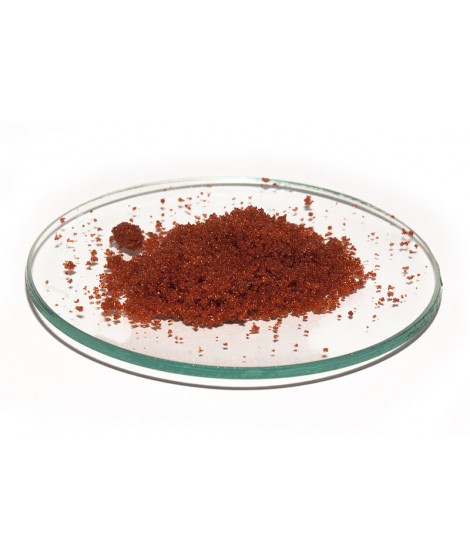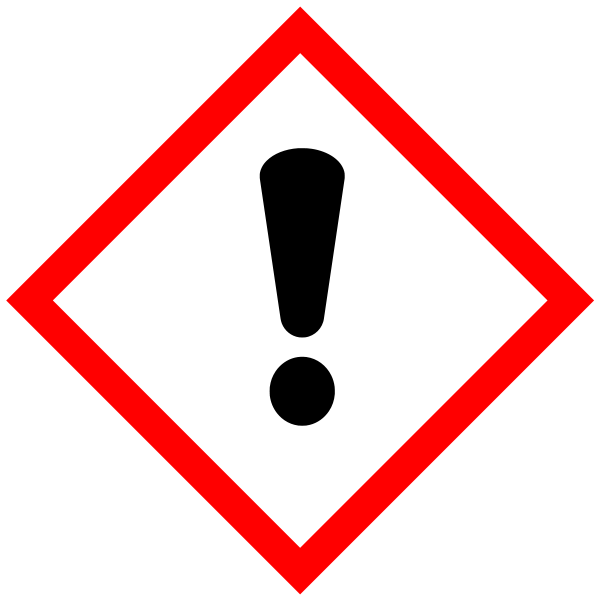COBALT SULFATE HEPTAHYDRATE 99%, kg
6.99 €
Cobalt(II) sulfate, CAS 10026-24-1, cobalt and sulfuric acid salt, divalent cobalt sulfate, cobalt sulfate heptahydrate
Parameter | Attribute |
Cobalt sulfate | Cobalt II sulphate, cobalt-sulphuric acid salt, divalent cobalt sulphate, cobalt sulphate heptahydrate, |
Formula | CoSO4·7H2O |
Structure |   |
IUPAC | Cobalt (II) sulfate |
INCI | - |
CAS | 10026-24-1 |
Molar mass | 281,103 g/mol |
Density | 1,948 g/cm3 |
Solubility | In water: 60.4 g/100 mL (3 °C) 67 g/100 mL (70 °C) In methanol: 54.5 g/100 mL (18 °C) |
Cobalt(II) sulphate is an inorganic compound with the formula CoSO4(H2O)x. Cobalt sulphate usually refers to the heptahydrate CoSO4.7H2O respectively. The heptahydrate is a red solid soluble in water and methanol. Since cobalt(II) has an odd number of electrons, its salts are paramagnetic. Cobalt is one of the three metals that are magnetic at room temperature, i.e. can be affected by a magnetic field.
In electroplating, cobalt sulphate is used to produce electrolytes for zinc-cobalt alloy coatings. Zinc-cobalt electrolytic alloys have better corrosion resistance compared to zinc coatings. Due to their good combination of physicochemical properties, these coatings are mainly used in (a) the automotive industry, and (b) the aerospace industry, where the main challenge is to replace banned toxic cadmium coatings. Zinc-cobalt coatings have higher hardness, better solderability, etc. In addition, an alloy containing 9-11% cobalt is comparable to cadmium coatings in terms of its anti-corrosive properties under marine conditions. Cobalt sulphate is added to the patina of nickel plating baths to improve the smoothness, brightness, hardness and flexibility of coatings.
In horticulture and agriculture it is used to improve the soil. Cobalt sulphate heptahydrate is added to fertilisers applied to grassland grazed by ruminants to stimulate vitamin B12 production. When used as a soil fertiliser, an initial application of 375 g/ha in late spring is recommended. The timing is important as pasture cobalt levels remain elevated for only 6-8 weeks, so spraying should be done in spring. It takes at least a month for cobalt to reach the grass through the fertiliser, so grass testing should be carried out 4-6 weeks after application to ensure that the grass has reached adequate levels. After a few years of capital application, maintenance rates can usually be reduced to 250 g/ha/year. For foliar application, the recommended foliar application rate of 120-240 g/ha of cobalt sulphate may be more effective than cobalt added to fertiliser on soils with higher manganese content. Again, the duration of efficacy is limited and timing is very important. Two sprays of 120 g/ha will provide more protection than one larger spray. It can also be used at the same rate in pastures that are to be cut or have just been cut, for hay, silage or bales. Leaves should be applied in spring or early summer as these are the peak periods of animal demand.
In animal husbandry, cobalt sulphate is used in animal feed and as a feed additive, as cobalt is a trace element essential in the diet of ruminants (cattle, sheep). Cobalt as a trace element is essential for the formation of vitamin B12 and for the maintenance of adequate hemoglobine levels. Human red blood cells contain cobalt in the form of vitamin B12. It is the only vitamin that contains this heavy element. When cobalt sulphate heptahydrate is used in the manufacture of feed additives, the calculated intake is 220 000 mg/kg of cobalt element. Cobalt sulphate assists intestinal enzymes by helping to produce vitamin B12. Vitamin B12 is vital for intestinal microbes to convert stomach contents into digestible material used for energy and weight gain. Therefore, if cobalt is deficient, this will limit the production of vitamin B12 and as a result lambs will not be able to digest their food properly. Cobalt sulphate can help maintain cobalt levels in animals by mixing it with water and giving it orally. The recommended mixing ratio is 100 grams with 5 litres of water and the dosage is 30 ml per animal.
In ceramics, cobalt sulphate is used in glazes to produce a blue or cyan colour. Cobalt sulphate loses water from the molecule when heated and changes from red to blue. Cobalt compounds have been used for centuries in blue glazes and ceramics. Cobalt has been found in Egyptian statues and Persian beads, in glass found in the ruins of Pompeii, and in China as early as the Tang dynasty (618-907) and later in blue porcelain during the Ming dynasty (1368-1644).
In metalworking, most of the cobalt produced is used in special alloys. Magnetic alloys such as Alnicos or Neodim for permanent magnets account for a large part of world production. Large quantities are used for alloys that retain their properties at high temperatures and for superalloys that are used near their melting points (when steels would become too soft). Cobalt is also used for hard alloy alloys, tool steels, low expansion alloys (glass and metal seals) and constant modulus (elastic) alloys. Cobalt is the most suitable matrix for cemented carbides.
Important: Add the item to your basket, fill in the recipient's details and confirm your order. Thank you!
To save your precious time, we will deliver your order to your address at a time convenient for You!
*- The pictures of the goods may not correspond to the actual appearance, colour, assembly or shape of the goods and their packaging. The information in the product description is of a general nature and may not correspond to the information on the packaging of the product and may not be the exact use of the product. The information given on the stocks and prices of goods may, in certain cases, differ from the actual prices and stocks of goods
**- Trade in toxic substances is carried out in accordance with the provisions of the Law on the Control of Poisonous Substances (current version). Before purchasing toxic substances, the purchaser must present a permit to work with toxic substances
Signal word: DANGER |
Hazard icons:
|
Danger phrases: H302 Harmful if swallowed H317 May cause allergic skin reaction H334 May cause an allergic reaction, asthma symptoms or breathing difficulties if inhaled H341 Suspected of causing genetic defects H350i May cause cancer by inhalation H360F May impair fertility H410 Very toxic to aquatic organisms, causing long-term effects |
Precautionary statements: Precautionary phrases - preventive P273 Keep out of the environment P280 Wear protective gloves/use eye protection Precautionary statements - rebound P302+P352 In case of contact with skin: Wash with plenty of soap and water P304+P340 INTRODUCTION: Remove the victim to fresh air; the victim must be in a comfortable position to allow free breathing P308+P313 In case of exposure or suspected exposure: seek medical attention |
Related products
(8 other products in the same category)













